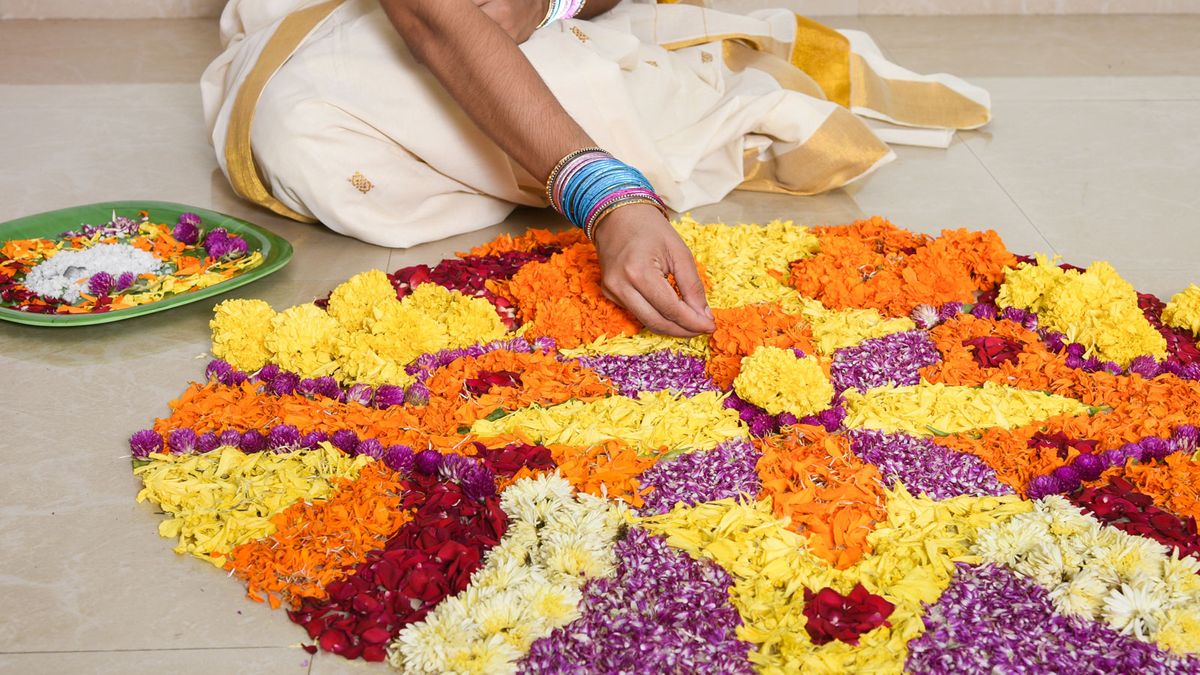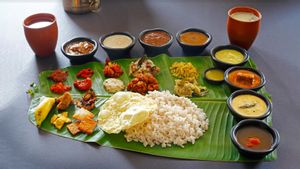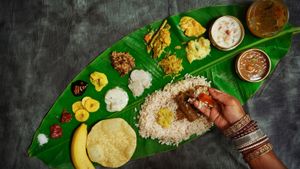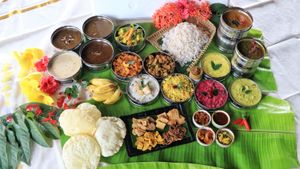Onam, one of South India’s most widely celebrated festivals, is a 10-day long festival celebrating the rich Malayali culture and homecoming of King Mahabali. The Onam festival falls during the Malayali month of Chingam between August and September. Onam, also known as Thiruvonam, marks the harvest festival of Kerala, called Kolla Varsham. Onam 2022 is a joyous occasion that is celebrated with immense enthusiasm and tradition. Commemorated in God’s own country, the ten-day festival of Onam sees a revival of ancient traditions and deep-rooted Malayali culture. The intricate Pookalam at entrances of home, exciting snake boat race, lip-smacking Sadya meal and exquisite Kaikottikali dance are some of the attractions of the Onam festival.
A colourful, energy-packed occasion, each day of the 10-day festival has a different religious importance of its own. The first-day Atham is followed by Chithira, Chodi, Vishakam, Anizham, Thriketta, Moolam, Pooradam, Uthradom, and the last and most auspicious day Thiruvonam.
When is Onam? Onam is celebrated in which state?
Celebrated in the vibrant state of Kerala, Onam 2022 starts on August 30, 2022 and ends on September 8, 2022. During these ten days, the entire state of Kerala and the Malayali community around the world celebrates the harvest festival. Several activities, cultural programs, and sporting events are organised for the merriment of the locals.
History and significance of Onam
The ten-day-long harvest festival, Onam, also marks the homecoming of legendary King Mahabali. According to mythology, King Mahabali was a mighty and benevolent ruler in Kerala. Peace and prosperity flourished during his reign. King Mahabali defeated the gods and ruled over the three worlds. Soon his generosity and popularity became a reason for insecurity among the gods who reached out to Lord Vishnu for help.
Lord Vishnu took the form of a Brahmin dwarf (Vamana), his fifth incarnation to defeat the King with his wit. On being asked by King Mahabali what gift the Brahmin desired, he asked the ruler for as much land he could cover in three steps. The Brahmin took the form of a giant and covered the whole earth in two steps. When he asked King Mahabali where to put his third step, the ruler offered his forehead. For keeping his promise Lord Vishnu sent the King to patala, or the underworld and granted him a boon. King Mahabali could return to his kingdom once a year and the Onam festival symbolises his homecoming.
Rituals of Onam

Onam rituals are traditions that are passed down through generations and are followed with the same devotion for a period of ten days. People wake up at the crack of dawn and wear new clothes known as Onakkodi. Women get together and make a variety of floral designs known as Pookkalam. A lavish variety of 13 dishes known as Onam Sadya are prepared along with a payasam that is made using rice, milk, sugar, and coconut. Food is served in an authentic manner on banana leaves as the entire family gathers and eats together.
On the last day of Thiruvonam, conical figures in various shapes are made from sticky clay and painted red. They are then decorated with a paste made using rice flour and water to place at important corners of the home, including the entrance. Some of these cone figures represent different Gods and Goddesses and are known as Trikkakara Appan. Elaborate prayer ceremonies are performed on the last day by the senior most person of the house, who plays the role of a priest. Ata, an offering made from rice flour and molasses is made for God. Lamps are lit, and flowers and Naivedyam (offering for God) are offered to God thanking them for the bountiful harvest for the year that was and asking for blessings for the coming year.
Onam 2022 celebrations
Onam is celebrated in many ways for ten days.
Day 1- Atham
The start of a ten-day-long Onam festival, Atham kickstarts the preparations to welcome King Mahabali to his kingdom. Homes are deep cleaned and the first layer of Pookkalam, a flower carpet, is created along with Attha Poo, to welcome the spirit of their benevolent ruler.

Day 2- Chithira
On the second day of Onam, two new layers of orange and yellow flowers are added to the Pookkalam. Families visit local temples and place earthen mounds, a symbolic representation of King Mahabali, in the courtyards of their homes.
Day 3- Chodhi
New layers of flowers are added to the Onam Pookalam. Apart from this new clothing and jewellery are purchased on this day.
Day 4- Vishakam
Preparations for Onasadya begin on the fourth day. Families celebrate this day by stocking their homes with the season’s first crop and preparing a variety of foods.
Day 5- Anizham

The fifth day of Onam is celebrated with a historic snake boat competition, Vallamkali, on the Pamba river.
Day 6- Thriketta
Pookalam receives fresh blooms. Families visit ancestral homes and temples seeking blessings on this auspicious day.
Day 7- Moolam
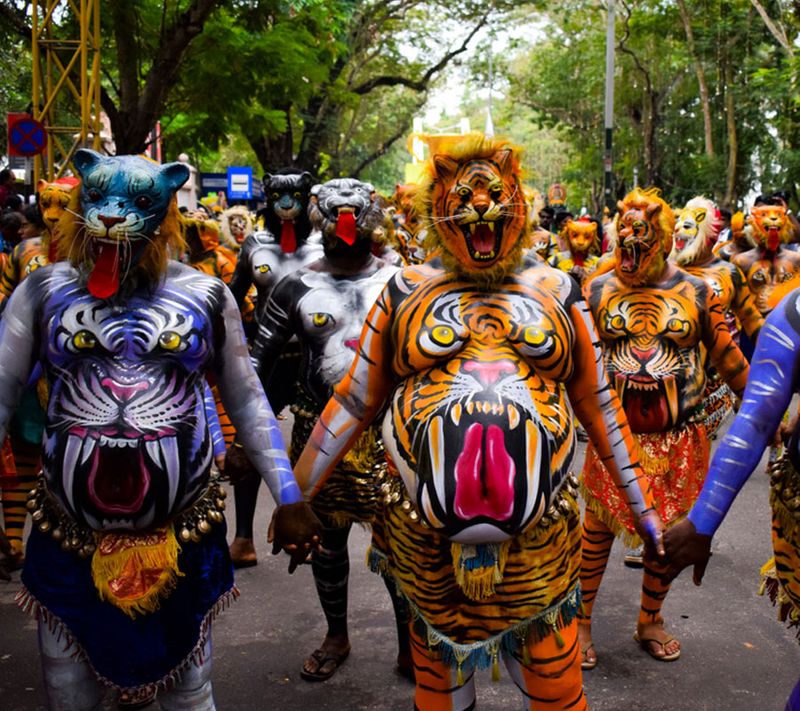
From this day Onasadya is offered as prasad in temples of Kochi. Dance forms such as Pulikali and Kaikottukali are performed.
Day 8- Pooradam
New blooms are added and the Pookalam grows beautifully. A clay statue of King Mahabali and Vamana are placed in the centre of the Pookalam as an invitation to welcome the king into the home.
Day 9- Uthradam
On the second last day, preparations for King Mahabali’s arrival are in order. Several recipes are made using freshly harvested fruits and vegetables.
Day 10- Thiruvonam

On the last day of the Onam festival, doors are painted with a batter of rice flour to welcome King Mahabali. Families prepared a lavish Onam feast and enjoy Onam Sadya with each other.
Onam rangoli or Pookalam

Like any Hindu festival, Onam celebrations are incomplete without decoration with flowers. Known as Pookalam, on the first day, the flower-based rangoli is known as Athapoo. Thumba, a petite white flower, is used to lay the base for Onam Pookalam. Tulasi adds a vibrant shade to the rangoli, while its lingering smell brings calmness to the entrance of the home.
Jamanthi or marigold is a popular flower used to add colour to the Pookalam. Believed to bring happiness, you can add Jamanthi to your rangoli in shades of red, yellow, orange, and white. Chethi, a red-coloured flower, brings a rich appeal to the Pookalam. Butterfly pea, traditionally known as Shankupushpam blooms in every corner of Kerala, making it one of the most popular flowers used in the Onam Pookalam. It is a radiant blue flower with a yellow centre. Chembarathi, more commonly known as hibiscus, adds an opulent shade of crimson to the Onam Pookalam.
Made in a round shape, Pookalams are filled with a variety of vibrant flowers in different designs to celebrate the auspicious occasion.
If you are still wondering, Onam is the festival of which state? It takes place in Kerala and like any other festival, Onam brings families and friends together over ten days. Prayers, delicious food, decorations, and age-old traditions mark the momentous Onam festival in India.


